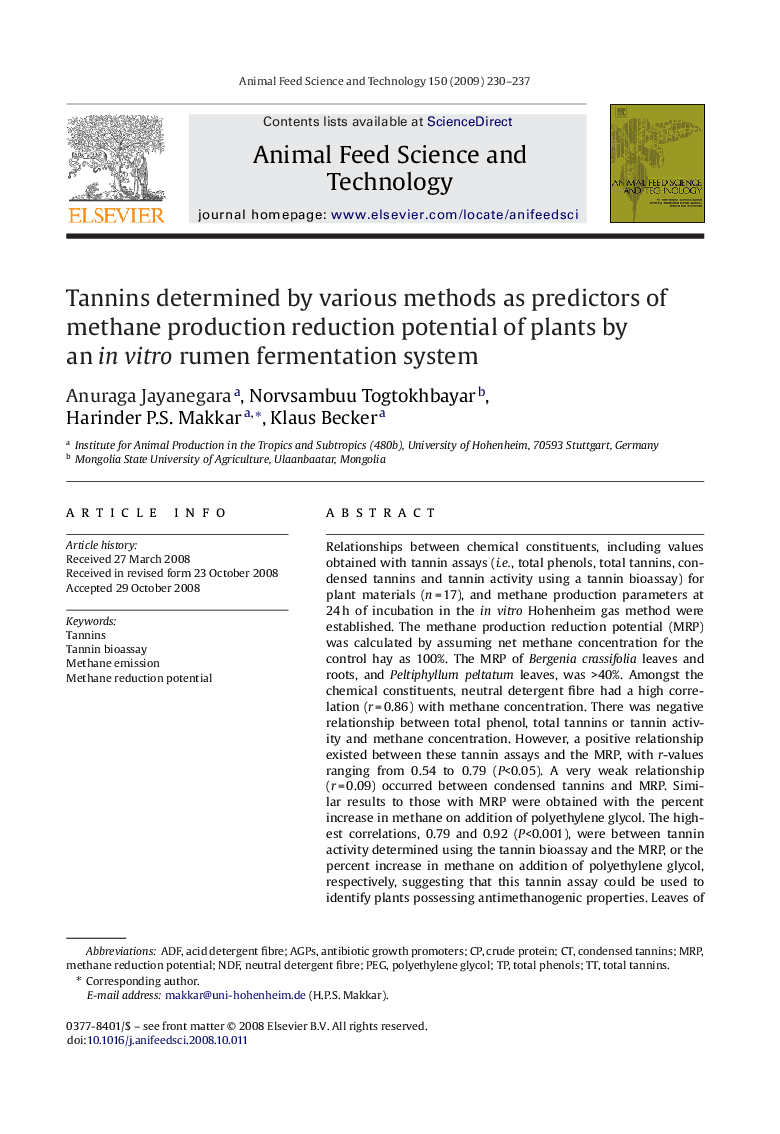| Article ID | Journal | Published Year | Pages | File Type |
|---|---|---|---|---|
| 2420347 | Animal Feed Science and Technology | 2009 | 8 Pages |
Relationships between chemical constituents, including values obtained with tannin assays (i.e., total phenols, total tannins, condensed tannins and tannin activity using a tannin bioassay) for plant materials (n = 17), and methane production parameters at 24 h of incubation in the in vitro Hohenheim gas method were established. The methane production reduction potential (MRP) was calculated by assuming net methane concentration for the control hay as 100%. The MRP of Bergenia crassifolia leaves and roots, and Peltiphyllum peltatum leaves, was >40%. Amongst the chemical constituents, neutral detergent fibre had a high correlation (r = 0.86) with methane concentration. There was negative relationship between total phenol, total tannins or tannin activity and methane concentration. However, a positive relationship existed between these tannin assays and the MRP, with r-values ranging from 0.54 to 0.79 (P<0.05). A very weak relationship (r = 0.09) occurred between condensed tannins and MRP. Similar results to those with MRP were obtained with the percent increase in methane on addition of polyethylene glycol. The highest correlations, 0.79 and 0.92 (P<0.001), were between tannin activity determined using the tannin bioassay and the MRP, or the percent increase in methane on addition of polyethylene glycol, respectively, suggesting that this tannin assay could be used to identify plants possessing antimethanogenic properties. Leaves of Rheum undulatum, Vaccinium vitis-idaea, B. crassifolia, Rhus typhina and P. peltatum, and roots of B. crassifolia have considerable potential (i.e., >25%) to decrease enteric methane production from ruminants.
